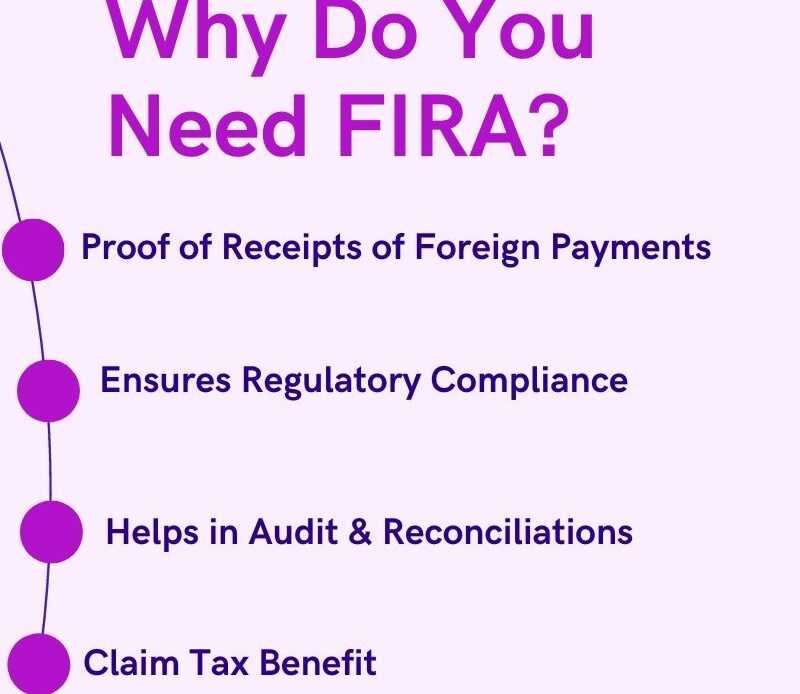BriskPe facilitates seamless, cost-effective cross-border payments for Indian exporters. Open virtual collection accounts, generate invoices, track payment status, and secure FIRA effortlessly
If you’re engaged in international trade or providing services to clients abroad, you’re no stranger to the intricacies of cross-border money transfers. In such scenarios, the Foreign Inward Remittance Advise (FIRA) plays a pivotal role as it acts as concrete evidence of the payments received from foreign sources. In this comprehensive guide, we will delve into the significance of FIRA and its various types to help you better understand its importance.
FIRC and its origin
In the dynamic financial landscape of 2016, the Reserve Bank of India (RBI) introduced a game-changing system known as EDPMS, short for Exports Data Processing Management System. This innovative platform served as the digital hub, diligently recording a two-way flow of critical data.
On one hand, it meticulously documented the shipping bills – a testament to the tangible goods being exported, as recorded by Indian Customs at various bustling port locations. On the other, it captured the digital essence of Software exports (SOFTEX), skillfully tracked by the Software Technology Parks of India.
However, this digital revolution didn’t stop there. EDPMS extended its reach to cover the realm of export payments. It became the guardian of Foreign Exchange received by Authorised Dealer (AD) banks, ensuring that every detail was securely logged in the digital archives.
Considering EDPMS’s transformative impact, the Federation of Indian Chambers of Commerce and Industry (FEDAI) issued a pivotal directive to banks. They were tasked with issuing physical FIRCs exclusively for capital account transactions, such as Foreign Direct Investment (FDI) and Foreign Institutional Investment (FII) inwards. The conventional practice of physical FIRCs for export inwards transactions underwent a metamorphosis, making way for the emergence of a new star – the Inward Remittance (IRM) number, meticulously generated within the EDPMS system.
Exporters soon found themselves facing the dawn of a new era with the introduction of the Foreign Inward Remittance Advice (FIRA/FIRS). This document, presented on the bank’s letterhead, became the exporter’s trusty companion, providing a wealth of information including the exporter’s name, the exported amount, the INR equivalent, and the precise credit date.
Understanding the Basics of FIRC
Receiving international payments necessitates the acquisition of a FIRC. The process of obtaining this certificate involves the recipient, known as the beneficiary, applying for it once the funds are credited to their bank account. The purpose of the transaction must be clearly specified, and based on this information, the Authorised Dealer (AD) of the Reserve Bank of India (RBI), typically the bank through which the international payments are routed, issues the FIRC.
Types of FIRC
Authorised Dealers (ADs) issue two primary types of FIRC:
- Physical Foreign Inward Remittance Certificate (FIRC)
This type of FIRC is issued when your business involves inward remittances related to Foreign Direct Investment (FDI) and Foreign Institutional Investment (FII). These transactions adhere to RBI guidelines and exclusively use banking channels for international payments. After June 20, 2016 no physical FIRC were issued for exports related remittances and only e-FIRC is issued.
- Electronic Foreign Inward Remittance Certificate (e-FIRC)
ADs are required to report evidence of all inward remittances to the Export and Data Monitoring Systems (EDPMS), and subsequently, they issue the electronic version of FIRC, known as e-FIRC.
The beneficiary must provide the bank with the receipt of payment or any other outstanding transfers, which are then uploaded to the EDPMS. An Inward Remittance (IRM) number is generated, and the e-FIRC is sent to the beneficiary’s account within a week or two from the date of the foreign currency’s receipt through cross-border money transfer.
Foreign Inward Remittance Advice (FIRA)
The Foreign Inward Remittance Advice (FIRA), is another name for FIRC and is often referred to simply as Payment Advice, serves as a legal confirmation of foreign currency receipt for both exporters and freelancers. To obtain the FIRA or Payment Advice, the beneficiary should initiate a request with the bank receiving Foreign Currency in NOSTRO and responsible for processing the foreign currency transaction. This request should include essential information such as the beneficiary’s account number, the transfer amount in both foreign and Indian currency, as well as the date and purpose of the transfer. After the submission of the request, the bank will meticulously validate the provided details and subsequently upload the payment information into the Export and Data Monitoring Systems (EDPMS). The process concludes with the generation of the Inward Remittance (IRM) number or e-FIRC number on the portal. Using this unique identifier, the beneficiary gains access to the electronic FIRC or Advice, available for download from the portal.
Key Components of a Foreign Inward Remittance Advise
A complete FIRA includes the following essential details:
- Name of Beneficiary/Exporter
- Mode of payment
- Payee’s name and address
- Name and address of the bank authorizing the transaction
- Cheque number or telegraphic transfer (TT) or demand draft (DD) number
- FDI amount in the foreign currency
- Equivalent amount in rupees (both in numerical and written forms)
- Name of the recipient
- Foreign exchange rate in effect
- Purpose of the inward remittance (e.g., share transfer or export)

The Significance of e-FIRC/FIRA
e-FIRC/FIRA serve a crucial role as legal proof of foreign exchange inward remittances. The RBI closely monitors these remittances, and ADs are obligated to report them through the EDPMS, making cross-border money transfers more transparent. Notably, FIRCs become indispensable in various scenarios:
- Tax Benefits: If you are an exporter and your services are exempt from service tax per the guidelines for export of services, e-FIRC/FIRA is vital for claiming tax benefits. It serves as concrete proof of transactions, enabling you to secure relaxations in service tax for specific services. Without e-FIRC/FIRA, you may not be able to claim these benefits.
- Share Transactions: e-FIRC/FIRA plays a significant role when shares are issued to foreign entities or individuals. It acts as proof of share application money received. It is also essential in cases where a resident Indian transfers shares to a non-resident or foreign entity and receives the purchase consideration.
- Export Promotion Schemes: e-FIRCs/FIRA are crucial documents for generation of e-BRCs (Electronic Bill Reconciliation Certificate) and submission to the Director General of Foreign Trade (DGFT) in cases involving export promotion schemes like Export Promotion Capital Goods (EPCG) and advanced licensing requirements.
Summing up
In summary, the Foreign Inward Remittance Certificate/Advise is a document of utmost importance when dealing with inward remittances. Exporters and freelancers should diligently follow up with their banks to secure this certificate for each inward remittance. E-FIRCs/FIRAs not only provide a secure record of your international transactions but also enable you to access various financial benefits and comply with regulatory requirements.
For a hassle-free experience in obtaining e-FIRC/FIRA for your inward remittance transactions, consider BriskPe. Our platform ensures swift cross-border money transfers to your Indian bank account in multiple currencies, often within 24 hours. Sign up with BriskPe today and streamline your international financial operations.









